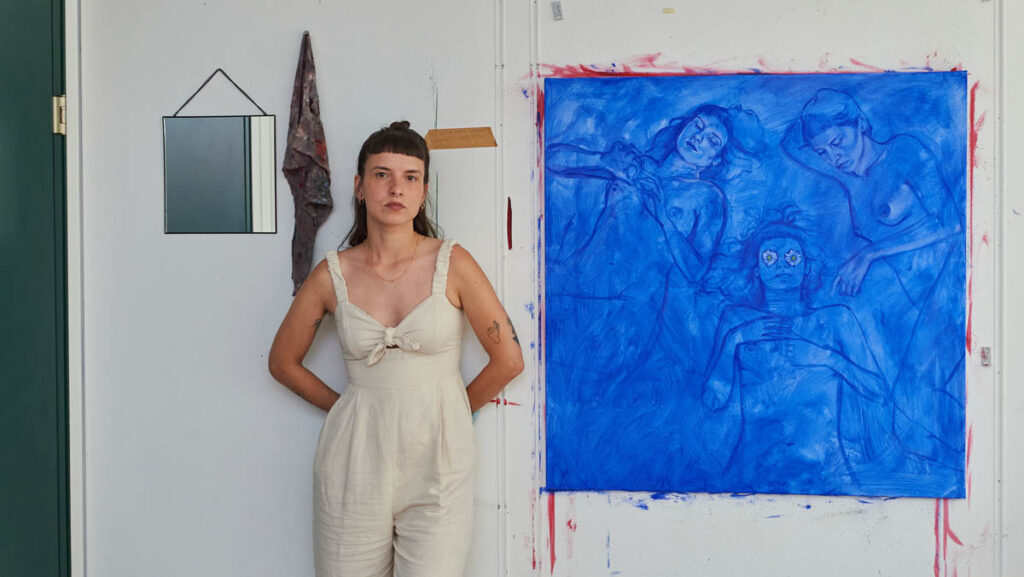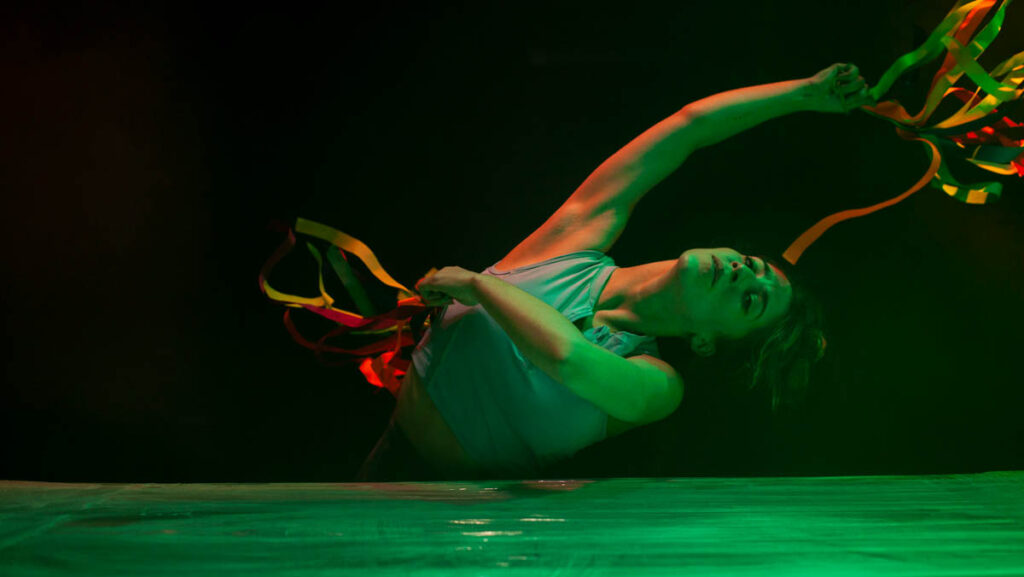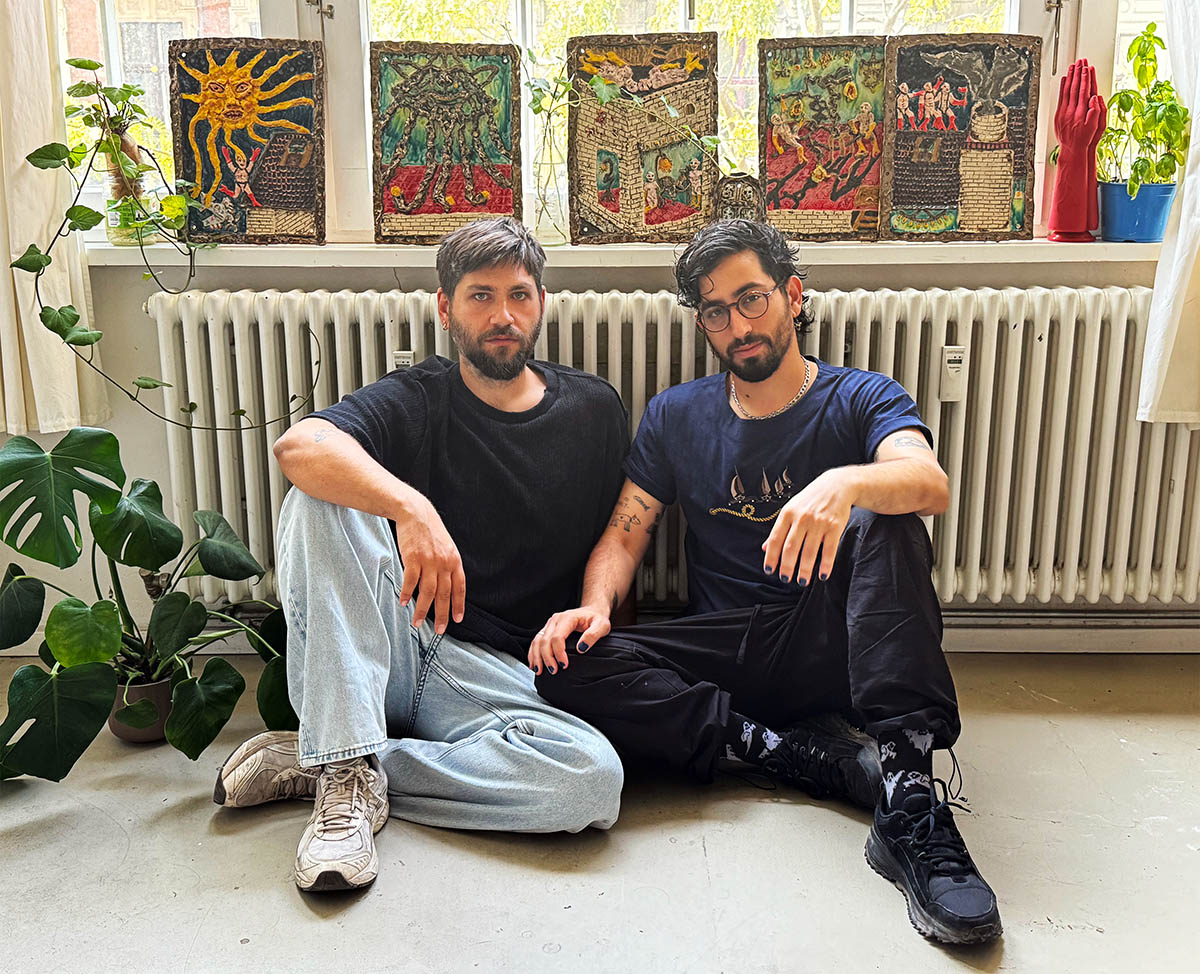
You recently moved in Künstlerhaus Bethanien residency program. Are you settled in your new studio?
We arrived at the residency in mid-July, marking our first time leaving Israel since the Israel government’s judicial Coup and the subsequent Gaza war. After nearly two years of intense weekly demonstrations against a corrupt and racist government—demanding an end to the war and the return of the hostages—we were utterly exhausted. Moving to the residency at Künstlerhaus Bethanien (KB) with the support of ARTIS felt like an opportunity to escape the traumatic and disheartening atmosphere in Israel. We left with mixed feelings—saying goodbye to family and friends was difficult, but we were also relieved to embrace the chance to create in a supportive and sane environment. The transition to life in Kreuzberg has been striking—The vegan food on every corner, the pro-queer atmosphere, and the welcoming staff at KB have created what feels like an artist’s paradise. It almost feels too good to be true compared to where we come from.

What are the benefits and challenges of working as a couple?
In our art practice, „Two heads are better than one“ is fundamental. The Western art world often emphasizes the idea of the „genius artist,“ working in isolation, with their ego at the center. This approach can force artists to process ideas independently, leading to internal debates that can create confusion and insecurity. Working as a duo, however, offers a different dynamic. We’re committed to vocalizing our ideas to each other, no matter how undeveloped they might be. This creates a safe space for making mistakes, offering critiques, and experimenting.
In residency spaces, where artists are often isolated from their familiar communities and can face loneliness, working together is a lifeline. While this approach may not work for every couple, our decade-long relationship has allowed us to bring our practice to a level of synchronization that continues to surprise us.

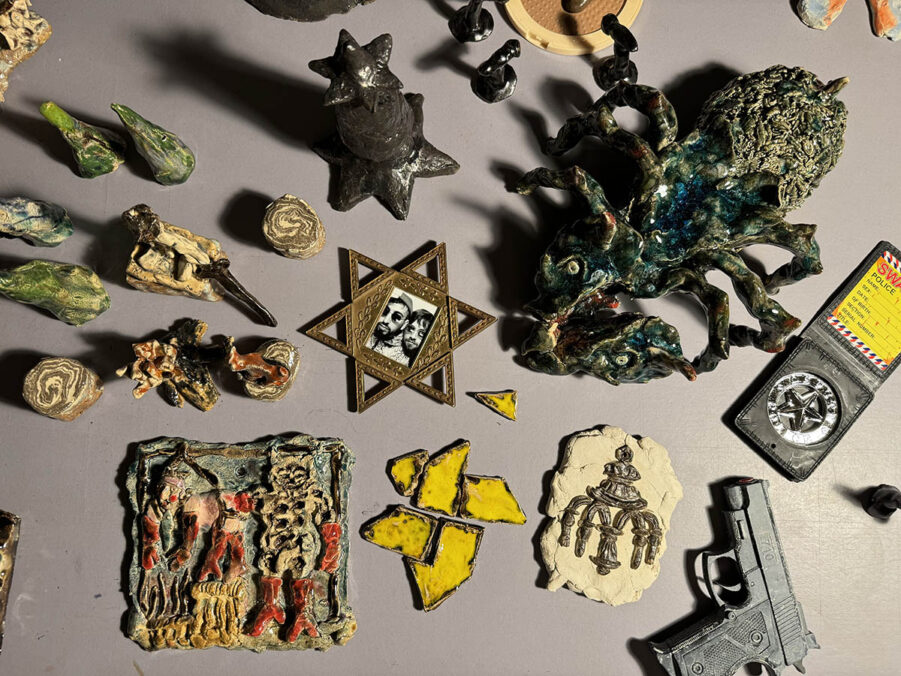
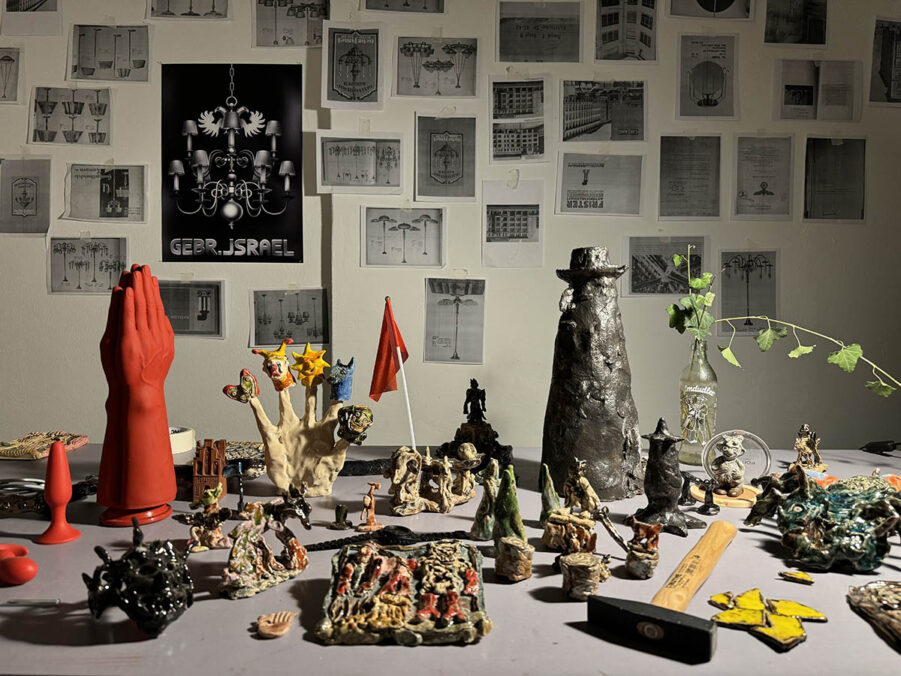
Our relationship itself became the focus of the project we started developing during the residency. Upon arriving at Künstlerhaus Bethanien, we were struck by the Jewish history of the site. The building was once home to the „Lichtfabrik,“ a Jewish-owned lamp factory founded by brothers Leo and Felix Israel in the early 20th century. Their legacy was tragically cut short by the Nazi regime. We felt a strong connection between our identity as a pair of artists and the Israel brothers—a pair of siblings who engaged in a collaborative creative enterprise that was disrupted by fascist rule.

On one of our first nights in the new studio, as we discussed project ideas and reflected on the Israel brothers, we could almost feel their mystical presence resonate within our relationship. This led us to develop a new project that intertwines different periods of war and Jewish displacement, exploring the resonance between past and present.
Could you share your upcoming project?
Our upcoming exhibition, titled „Gebr. Israel,“ pays homage to the „Lichtfabrik“ founded by the Israel brothers. The project blends our identities with theirs, weaving together different eras and locations through a short video work and ceramic sculptures. The video displayed at the entrance transports us aesthetically to 1930s Berlin, drawing inspiration from the surrealist cinema of that era. Yet, the narrative is deeply rooted in our contemporary experiences in Israel—protests, violent encounters, arrests, and Noy’s subsequent traumatic trial, from which he ultimately emerged innocent. This chaotic atmosphere is mirrored in the central ceramic relief, where two male figures—who could represent the brothers or ourselves—engage in creative activities within the historic „Lichtfabrik,“ surrounded by parades of grimacing figures. The scene leaves viewers questioning whether they are witnessing a political demonstration, a pride march, or a fascist rally.
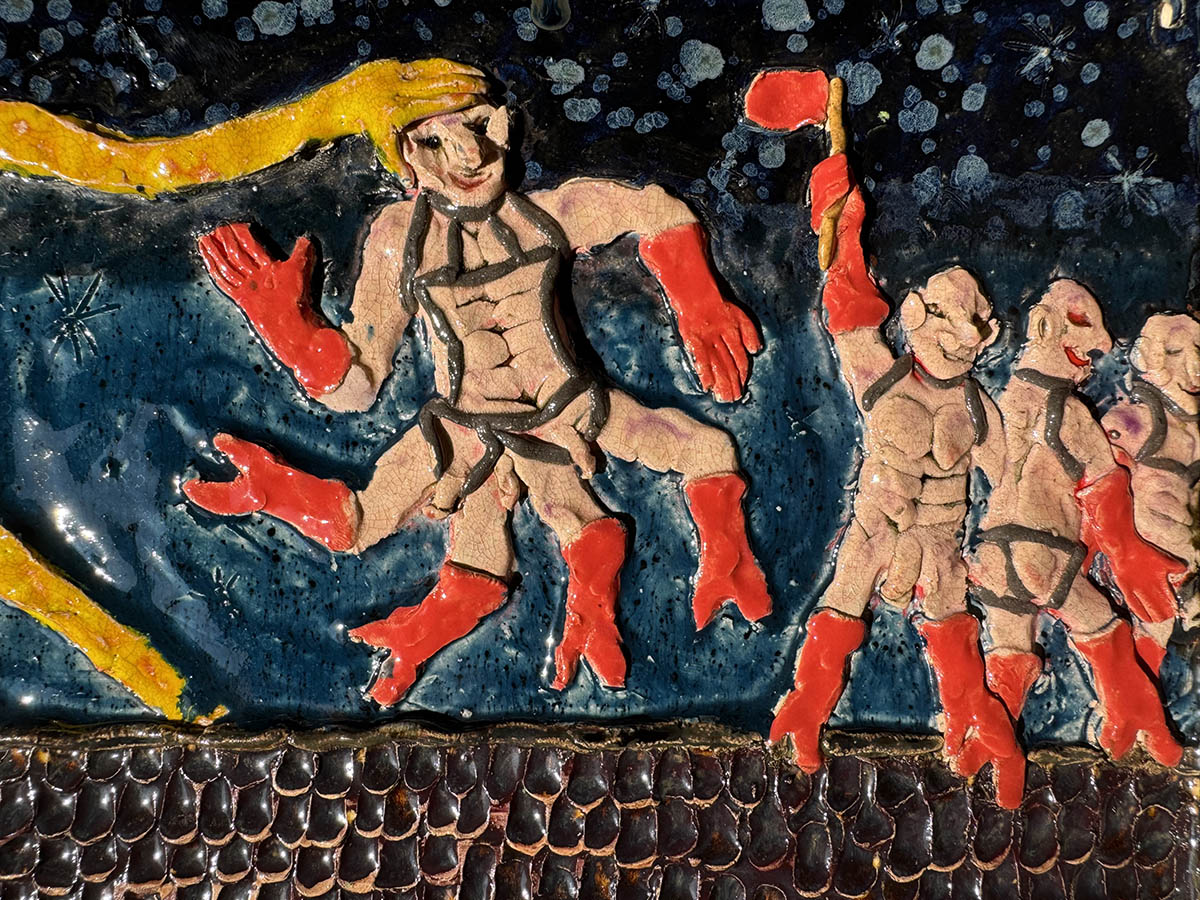
The exhibition also features small white phallic reliefs, replicas of the building’s original decorations, and a lamp based on the Israel brothers‘ original design. We’ve chosen to present the lamp as an inverted menorah, possibly symbolizing a Jewish version of the inverted cross. In this show, we confront the moral decline of the West, where war has become normalized and individual freedom is increasingly threatened. As we process our own trauma, the exhibition serves as a warning: any peaceful environment can suddenly turn into a nightmare.
Address and contact:
Künstlerhaus Bethanien
Kottbusser Str. 10/d, 10999 Berlin, Germany
www.bethanien.de
Noy and Tamir – www.instagram.com/wernoyandtamir
Lital Megidish – www.instagram.com/litalmegidish




